What Are Carbohydrates?
Carbohydrates are one of our three main macronutrients, alongside proteins and fats.
Our body needs energy to function daily, and we get that energy from food. Carbohydrates are a primary source of this energy. This is one of the main reason’s we’re not a fan of going low carb.
They can be found in a variety of foods, such as:
- Legumes: lentils, chickpeas, kidney beans, black beans
- Grains and starchy foods: potatoes, corn, sweet potatoes, quinoa, rice, pasta, noodles
- Dairy foods such as milk, yoghurt and cheese
- Most fruits
When we eat carbohydrates, they can be converted into glucose, which enters our bloodstream and fuels our brain and muscles. Carbohydrates in the form of glucose are essentially the body’s preferred energy source.
Alternatively, carbohydrates can be stored in our muscles and liver as glycogen, which is particularly useful for activities requiring explosive movements and exercise, such as weight training or daily activities involving lifting.
When you eat something like a piece of bread, it’s broken down into glucose, influencing our blood sugar levels, which naturally fluctuate throughout the day in response to carbohydrate intake. This is completely normal.
There are different types of carbohydrates, ranging from simple to complex, including monosaccharides and disaccharides (sugary carbohydrates), and polysaccharides and oligosaccharides (starchy carbohydrates).
Monosaccharides are single sugar molecules, and disaccharides consist of two sugar molecules. An example of a disaccharide is lactose, which can be found in dairy products like milk.
Polysaccharides and oligosaccharides are longer chains of sugar molecules. When we consume these carbohydrates, our body breaks them down into their sugar molecules to use them as energy.
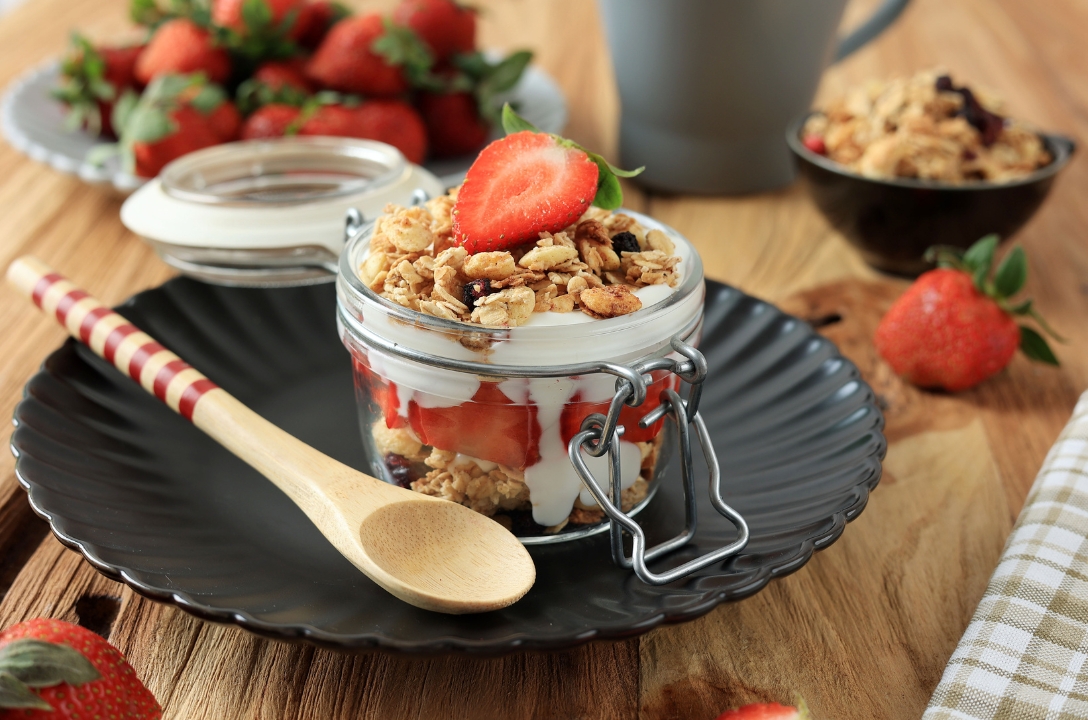
Simple Carbohydrates Versus Complex Carbohydrates: What’s The Difference?
Simple carbohydrates, like those found in lollies, are made up of monosaccharides, which are really simple sugars, often sucrose or fructose.
Complex carbs, like those found in whole grain breads or legumes, contain more oligosaccharides or longer chains of sugar molecules.
This difference in structure affects how they are processed in the body. Simple carbohydrates are broken down quickly, providing rapid energy, while complex carbohydrates take longer to break down, providing more sustained energy.
Understanding this can help us make better choices about the types of carbs we include in our diet.
Should You Try A Low Carbohydrate Diet?
Low-carbohydrate diets have become highly popular as a weight loss diet. They often encourage people to completely cut out or limit foods such as sugar, bread, rice and pasta.
People following this style of diet may experience quick weight loss – however the science behind this weight needs to be clarified. This “weight loss” is generally not from fat, but from water weight.
View this post on Instagram
Let’s unpack why this happens!
When we eat carbohydrates, they break down into glucose, which enters our bloodstream and gets stored as glycogen in our muscles. This glycogen is stored with water.
In fact, for every molecule of glycogen, there are three molecules of water. So it’s a one-to-three ratio.
So, when you stop consuming carbohydrates, your body still needs glucose to function. To maintain your body’s needs, it starts converting the glycogen stored in your liver and muscles back into glucose.
This process releases the water stored with the glycogen, leading to a loss of water weight rather than fat.
Plus, other factors can affect the scale. On a low-carbohydrate diet, you might eat less volume of food and less fiber, resulting in fewer stools in your bowels. This also contributes to the weight change.
However, as we know, diets often don’t work long-term. People find it hard to maintain a low-carbohydrate diet indefinitely. Not because they fail – but because the diet is unsustainable.
When they eventually eat carbohydrates again, such as having pasta at a dinner, they might see their weight increase. This is not because carbs are bad, but because their body is replenishing its glycogen and water stores.
Should I Be Worried About Gluten?
A lot of the fear mongering around carbs comes from the idea that gluten is inherently bad or causes leaky gut or inflammation.
If you have Coeliac disease – yes, you need to avoid gluten for life.
But if you don’t have Coeliac disease or an autoimmune condition where your body reacts to gluten, it’s not proven that gluten is inherently inflammatory or bad for you.
It can be common for people who aren’t Coeliac but still experience gut distress, like diarrhea or constipation, to blame gluten when they eat gluten-containing products. Often, it’s not the gluten causing the issue but rather fructans, a type of fermentable carbohydrate (FODMAP) found in many gluten-containing foods. So, it’s the FODMAPs, not the gluten, that might be causing the problem.
There are also other components in wheat that people can react to, even if it’s not the fructans. Many different variables can be involved. Additionally, what is the person usually eating with that gluten-containing product? Are they eating higher fat options, spicy foods, or other potential gut triggers? Simply cutting out all carbohydrates and then saying, “Yep, cool, carbs are the enemy,” is not a straightforward solution.
“Good” Vs. “Bad” Carbohydrates
Another aspect of fear mongering around carbohydrates is the “good” vs. “bad” carbohydrate mentality that we see a lot on social media.
People label foods as “good carbs,” like whole grain breads, whole grain pasta, and quinoa, and “bad carbs,” like sugar, white bread, and white pasta.
But, it’s not that simple. It can also be very problematic to fall into this “good food” vs “bad food” mentality.
While whole grains are nutritious, often having more fiber, vitamins, and minerals, eating them doesn’t make you a better person. Some people need to eat white pasta and white bread, and we don’t want to promote a mentality that shames certain foods.
This perspective is also privileged because not everyone has access to whole grains. It’s much cheaper to buy ultra-plain white bread, for example.
You don’t necessarily need to have whole grains in your entire diet. In the Australian dietary guidelines, for example, they recommend about 50% of your grain sources to be wholegrain – not all.
Having wholegrain versions of carbohydrates will probably make you feel a little fuller for a longer period of time, but that’s not the be-all and end-all. We’d rather you have a good relationship with food, and that’s more important.
Context Is Important!
Another important thing to consider about carbohydrates is exploring the context in which different kinds of carbs are helpful.
For instance, before a workout, you may not have the time or appetite to digest a whole meal. Having a meal or source of wholegrain carbohydrates before a workout may also cause some digestive upset.
In this context, having a source of simple, quick digesting carbohydrates like some lollies can be most helpful.
The Risks Of Cutting Out Carbohydrates
There are several risks we experience when removing carbs from our diets, such as cutting out bread, rice, and pasta.
The most common issue is tiredness and fatigue. Carbohydrates provide a lot of energy, and glucose from carbohydrates are the brain’s main fuel source. When we cut out carbohydrates, our brain function can suffer.
In the Keto community, they’ve actually called this the “low carb flu.” The way you feel when you cut out carbs can actually feel like you’re unwell.
Along similar lines, having glycogen stores available is crucial for exercise performance and recovery. If you don’t have access to glycogen, which helps with explosive movements, you might find it harder to complete movements, feel more fatigued, or not be able to lift as heavy.
You can “hit the wall”, especially in endurance sports like running. Runners use glucose in their bloodstream as the main fuel source. For long runs, they rely on glycogen stores next. If you haven’t optimised your glycogen stores by eating enough carbohydrates, you’ll experience “hitting the wall” quickly because your body doesn’t have enough fuel.
Avoiding Carbohydrates Is Not Sustainable
Another important point to consider is the sustainability of cutting out carbs. We know that diets don’t last forever. A helpful question to ask is – can I see myself doing this in five or ten years?
You may find it helpful to reflect on previous experiences with cutting out carbohydrates or going on unsustainable diets—are you still on that diet today? If not, why? It’s not your fault; diets don’t work because they’re too rigid.
Something that’s too rigid, strict, and doesn’t allow for real life, enjoyment, social life, mental health, and different times of capacity is ultimately not going to be a sustainable eating pattern.
When we cut out whole food groups like whole grains, starches, or even fruit, we cut out crucial vitamins and minerals our body needs to function optimally.
Carbohydrate-based foods provide iron, zinc, B vitamins, iodine, and more. When we cut these foods out for a long period, we risk developing nutritional deficiencies and experiencing random issues with our bodies.
Low Carbohydrates And Cravings
Cutting out a food can increase cravings for it. It’s like if I told you not to think about a pink elephant—it’s all you can think about. This principle applies to diets too.
If you cut out carbohydrates or sugar, you might become more aware of them in your environment and have more intrusive thoughts about them, increasing the risk of overeating when you do have access.
Based on anecdotal experience, when people don’t have enough carbohydrates, especially in the morning or at lunch (like a salad with chicken and no carbohydrates), by the afternoon, their blood sugar levels drop, and they crave quick energy sources like chocolate.
Generally, when we include more carbohydrates in our diet, we have fewer cravings.
The Importance Of Carbohydrates For Gut Health
Carbohydrates, and plant foods in general, are our main source of dietary fibre.
Fibre is the indigestible part of plant cell walls. To simplify – it’s the roughage that helps provide bulk for our stools and food for our gut bacteria.
Imagine if you take the food away from our gut bacteria—they’re not going to be thriving. Think of fibre as fertilizer, and your gut bacteria is a big flower bed. You need fertilizer to help the flowers grow.
Fibre is also a prebiotic, nourishing our gut bacteria. When we follow a reduced-carb diet, it can reduce the diversity of our gut bacteria and hinder its growth.
Another helpful analogy for gut health is comparing a thriving forest with hundreds of different types of plants, to a desert with just a few grasses. A disease or pest could easily wipe out the grasses in the desert, but a diverse forest is more resilient.
Similarly, having a variety of fibres and plant-based foods in our diet helps maintain a diverse and resilient gut bacteria ecosystem.
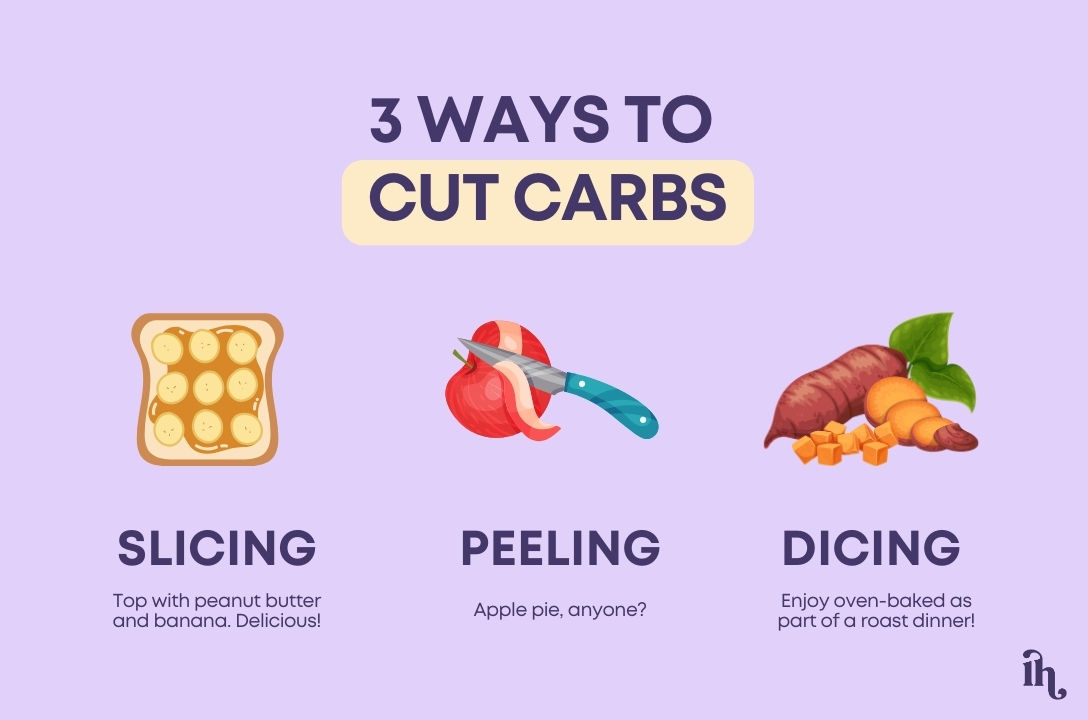
How Much Carbohydrates Should I Be Eating?
When we think about how much we need, we generally need about 45 to 65% of your diet to come from carbohydrates each day.
In general, we could suggest opting for whole grains for maybe around 50% – that’s kind of the general recommendation. It can be more or less depending on your individual needs and preferences.
If you’re someone who is really working on challenging food fears, and improving your relationship with food, focusing on whole grains right now may not be the most helpful thing. Instead, you may be practicing allowing yourself to have foods that are on the more “refined” side of carbohydrates.
This is where we talk about the idea of gentle nutrition. If you imagine a Venn diagram with two circles overlapping, one side represents nutrition knowledge—like whole grains having more vitamins, minerals, etc. On the other side is what your body wants and needs at that specific point in time and where you are in your own health journey.
What you should eat is somewhere in the middle. Just because whole grains have more nutrients and fiber, doesn’t mean they’re always suitable for you. Consider where you are in your health journey right now.
Tips For Enjoying Carbohydrates In Your Diet
To make your carbohydrate sources more satisfying, we always encourage pairing them with other macronutrients.
You may find that just having toast with butter or cereal with milk alone can leave you feeling hungry soon after. Pairing carbohydrates with other food groups can help. For example, adding fruit to cereal or yogurt, or adding some nuts and seeds on top for some nourishing fats.
Snacks are a great way to apply this. For instance, pairing a whole grain cracker with avocado adds fats. Or enjoying fruit with yogurt and nuts creates a balanced snack. And we can’t forget pairing chocolate with strawberries!
The big thing here is not to avoid carbohydrates, but to include them in your diet. Fruits, starchy veggies, whole grains, dairy or alternatives, and legumes are all beneficial and rich in micronutrients.
Please don’t listen to those saying you need to cut them out of your diet!
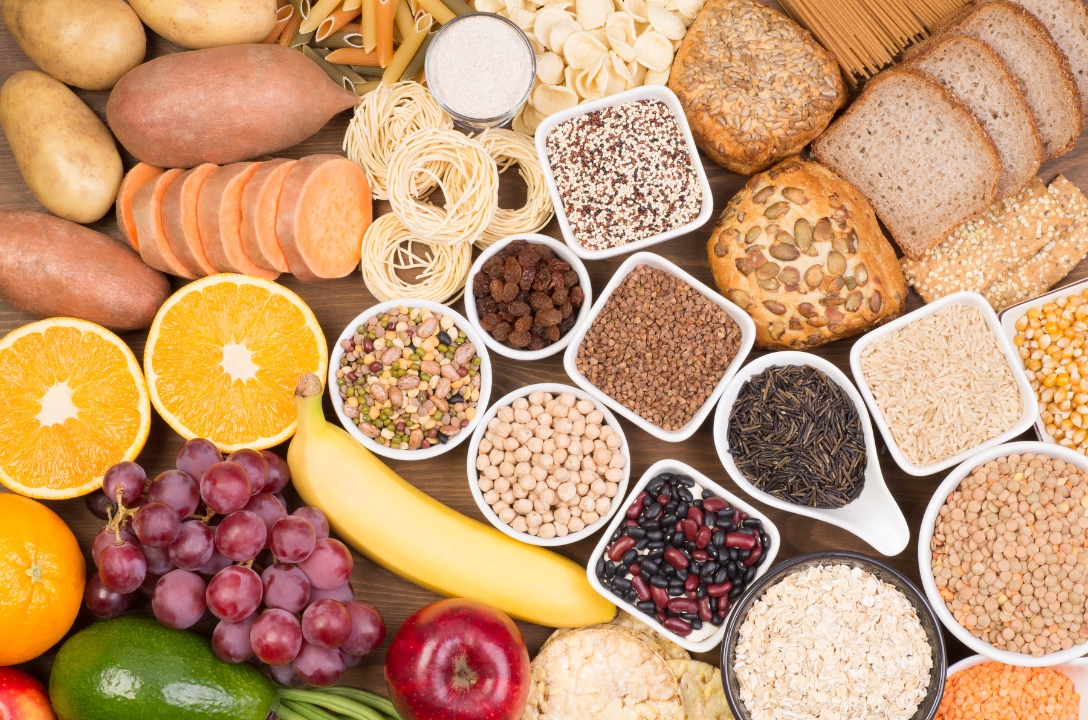

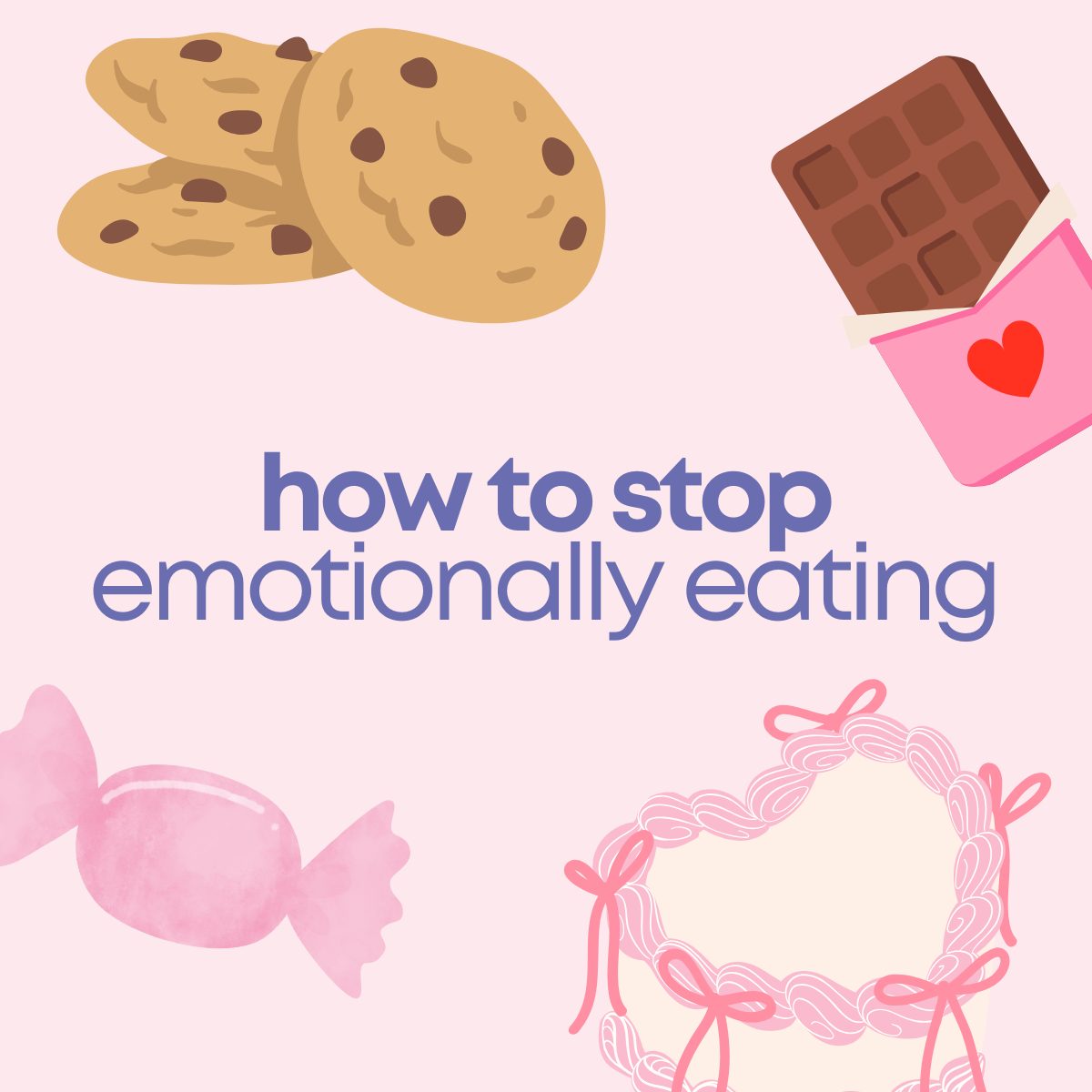
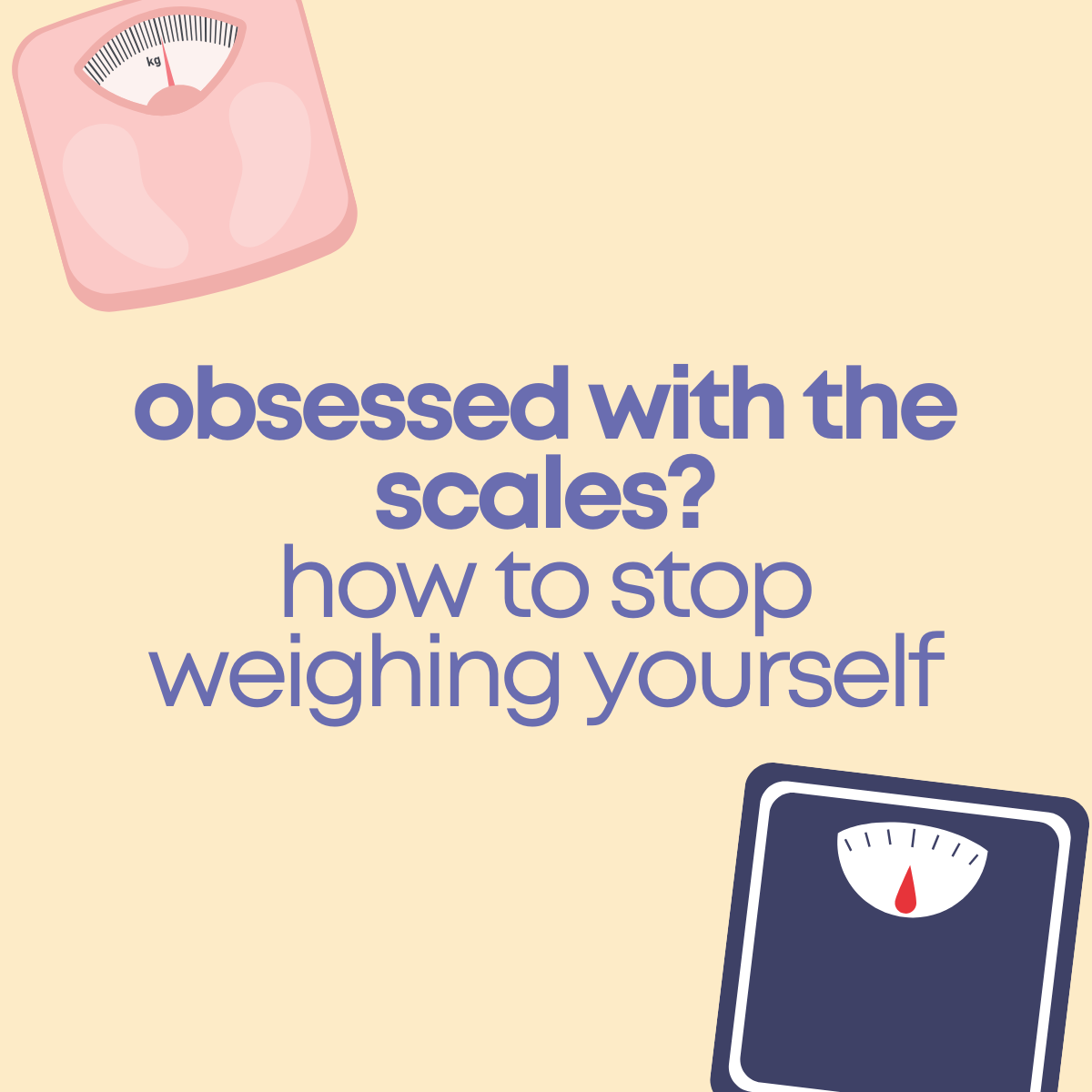

Comments +